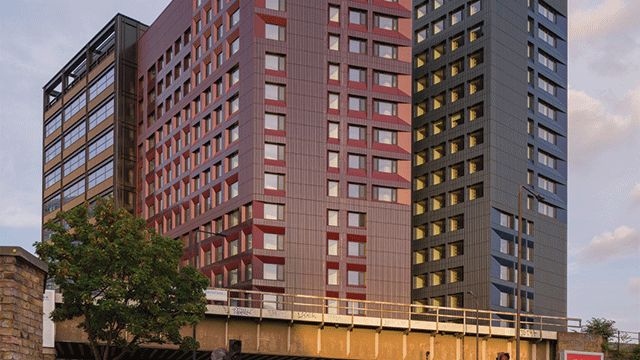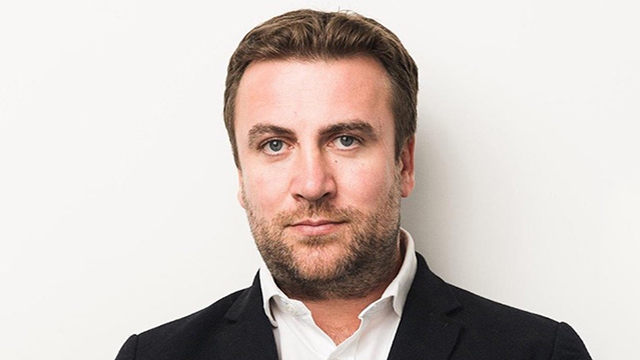Shortage of quality stock and consolidation are expected to fuel investment boom
A shortage of stock and income growth expectations sparked a boom in the hotel investment market in 2006. And hospitality industry restructuring will fuel the boom in 2007.
Philip Ward, a director at German bank Eurohypo, says: “Consolidation of the hotel industry on a large scale is still to come in Europe. It will involve property investors. Hotel chains will sell property to finance capital-intensive growth. Experience in the US shows that property-oriented investors can play a major role in the restructuring.” Hotel trading performance is expected to be a “top prospect”, according to the Emerging Trends in Real Estate 2006 survey by PricewaterhouseCoopers and the Urban Land Institute.
High net-worth individuals, institutional investors, REITs, property companies and private equity invested a total of €21bn in European hotels last year, a 31% increase on 2005’s figure of €16bn. Global transactions were up 38% to €30bn.
“People are just sitting with the cash right now waiting to do these big transactions. A lot of buyers in several locations have put pressure on prices and compressed yields,” says Alexis Delprat, director of European Hotels at Savills.
Throughout Europe, the hunt seems to be for prime assets: trophy buildings with a good brand and in a top location. London, Paris, Moscow and Amsterdam will be the favourites for 2007.
Morgan Stanley Real Estate Funds has begun a major drive into top-end hotels. It plans to build a €2bn European hotel portfolio following its acquisition of seven hotels from InterContinental for €634m in a manage-back contract last July. It now own 14 hotels in Europe.
Invesco recently closed a €700m European Real Estate fund. Geared at 60%, the fund will invest in three- and four-star hotels throughout Germany, France and Spain through a mixture of leases and management contracts and has promised investors a dividend of 7%, which should prove to be attractive.
The UK market has been the most active in Europe and investors there are now looking overseas. London & Regional has been active in Finland and Sweden — Nordic hotels account for €741m of the €1.9bn portfolio it listed on the UK’s Alternative Investment Market. The company owns some of London’s most prestigious hotels, including the Hilton on Park Lane, and has plans to develop two four-star hotels in Novosibirsk and St Petersburg.
Daniel Poser, managing director, hotels at London & Regional Properties, says: “The UK market has got very expensive. We take the view that when the underlying interest swap rate plus bank margin is higher than the yield investors are accepting, then you are often paying upfront for growth that may not materialise. Of course we look at special situations in the UK but we also have a network of northern and eastern European offices and most recently a substantial presence in South Africa. This gives us the ability to look at other places that haven’t become so crowded.”
According to Jones Lang LaSalle’s executive director of hotels, Rob Seabrook, some investment deals have now become so competitive that pricing seems out of kilter with the trading fundamentals of the hotels. “There is an ever-increasing pool of new buyers who are willing to pay aggressive prices. These people don’t seem to take on board some of the risks that more experienced buyers have historically priced into their models. This has forced traditional hotel investors, such as London & Regional, Quinn Hotels and many of the US private equity houses, to look to Europe for their buying opportunities,” he said.
Yields range from around 7.85% in mainstream markets back in 2001 to their current levels of 5.5-6.5%. Fledgling markets such as Central and Eastern Europe tend to reflect higher yields of 7-8.5%. Yield compression has occurred because a wave of new investor capital has entered Europe’s mature markets.
“The London market is still the strongest in Europe,” says Stephen Richardson, head of UK hotels at Atisreal. “One of our biggest investment deals last year was the disposal of Grade II-listed 10 Trinity Square. We went to market expecting between £65m-£75m and closed at £110m. The purchaser is now spending another £150m converting it into a hotel.
“For me, this deal, among others, is indicative of how international purchasers feel about London’s growth prospects,” he added. “The hunt for investment is strong, yet there is not enough quality product.”
Many deals use the “sale and manage-back” structure, rather an a sale-and-leaseback. Under a sale-and-manage-back, the investor buys not only the hotel, but also the staff. The investor pays the operator a base fee for running the hotel. The fee includes a goodwill payment for using the operator’s name. Fees are usually based on a percent of gross revenue and range from 2-2.9% in Asia to 3% in the US and 3-3.9% in Europe.
The investor also pays the operator an incentive fee for their services, based on a percentage of the gross operating profit. In Europe, incentive fees are often based on a sliding scale, enabling the operator to earn more profit if the hotel becomes more profitable. The investor also pays marketing and reservation fees to the operator.
Simple sale-and-leasebacks may also pose problems for investors who bid on the basis of current rents that may be difficult to sustain. “Property fundamentals need to be taken into account and investors who don’t do this should beware. Investors should always have regard to the hotel’s trading potential, irrespective of whether the operator is providing a lease,” says Seabrook.
Investors are attracted by the prospects for the hotel business itself. Europe is the world’s largest hotel market, with more than 5m rooms, versus 4.5m in North America, according to French consulting group MKG, and the hospitality industry is the fastest-growing global sector.
RevPar, or revenue per available room, reflects occupancy and rates and is a key indicator of hotel performance. In 2006, the European average RevPar rose to €79, 12.1% over 2005’s figure. In London, the average RevPar for high-end hotels hit £227 in September 2006, up 22% from September 2005.
Restructuring and consolidation in the hotel market will also push asset sales. Because of the capital expenditure required by the hotel business, any expanding company needs property sales in order to expand its business. Half of Europe’s hotel supply is divided among Accor (28%), Louvre (12%) and InterContinental (6%), according to Eurohypo. More concentration is expected in the future.
Accor’s recently-begun restructuring includes plans to sell all 200 non-strategic hotels by 2008 in a bid to reinvest in its economy brand in growing markets such as India and China. In 2005, it sold a portfolio of 128 hotels to Foncière des Murs, a subsidiary of French SIIC Foncière des Régions, for €1.025bn. In 2006, it sold a portfolio of 76 hotels in France and Belgium to the same company for €462m.
One concern is the rise in interest rates. The UK base rate stands at 5.25% and is expected to rise further. “That’s not going to help, but the main reason it has gone up is because of the strength of the economy,” says JLL Hotels’ Seabrook. “Hotel trading will benefit from the buoyancy of the economy and as long as a recession can be avoided, hotels will prove to be a good sector to invested in. The piles of equity looking for a home will continue to drive demand and prices in the short term.”
| Opportunities in Russia too good to pass up |
|
Russia is on more and more investors’ must-be-there list. They see great investment opportunities because of the country’s lack of a sizeable hotel industry. Investors such as UK-based London & Regional Properties have ambitious plans for the country. “We would like to be a leading investor in the Russian hotel market. We plan to acquire existing hotels and develop new ones,” says David Geovanis, managing director of L&R’s Moscow office. The company is building two new hotels in St Petersburg and Novi Sibirsk for a total of $100m. Last year it paid around $20m for the Heliopark country hotel in the Moscow region. “We only just scratched the surface and have lined up a three-man team to do hotel investment,” says Geovanis. Investment-grade product is scarce, he says. “It’s tough to say what yields are but I would put them at 14% to 15%.” Around 80% of investment transactions are done with local capital, according to Mark Wynne Smith, European chief executive of Jones Lang LaSalle Hotels. “But over the next three to four years, international investors will take a bigger slice,” he says. In central Europe, Prague is the destination for hotel investors because of the tourists the old capital attracts. However, Budapest and Warsaw have seen an upswing after a weak start to 2005. Yields for single assets are broadly on a par with Western cities, while the market is not yet developed enough to support portfolio dealing. “For investment returns, I would be happier to buy in Budapest, for example, than in Western Europe as the income potential is higher,” says Wynne Smith. The great demand for hotels in the city has forced yields lower. Prime yields for international hotels in the city centre are between 6.75% and 7%, according to Andrew Williams, head of Cushman & Wakefield Hotels. Development of new internationally branded hotels is increasing, though prime city centre opportunities are scarce. The biggest growth area is in the outlying areas of the city in mid-market locations and in the regional cities. |
| Portugal seeks investors to fund its fairway future |
|
Portugal’s minister for the economy and innovation, Manuel Pinho, wants the country to be Europe’s premier golf destination by 2009. The hotel sector is expected to play a large role in achieving this target. Domestic companies such as Vila Galé and Banco Espiritu Santo are involved in hotel investment while new companies, such as Grupo CS, have entered the market. But the hotel market remains dominated by private companies and families. There are very few transactions compared to other asset classes, and hotel prices remain high. It is difficult for companies to justify the asking prices with an imbalance between the investment needed and the likely future cash flows. Although there is growth, profits do not match room occupancy rates. In 2005, while occupancy rates rose by 4.3%, profits only rose by 1.4%, according to Cushman & Wakefield. In the first half of 2006, occupancy rates rose by 5.8% on 2005, with turnover 9.3% greater than the previous year. “Most key hotel operators are growing organically, buying land, making their own projects and moving on,” said Jorge Catarino, head of hotel advisory services at Cushman & Wakefield Hotels in Lisbon. “There are new entrants, banks, service industries and other real estate investments, groups that are cash-rich and looking for diversification.” The bête noire of the Portuguese hotel market is the management contract — although hotel operators like them, hotel investment companies prefer lease contracts. Lisbon, the Algarve and Madeira remain the sector’s hubs, although 50% of new resorts and 85% of the area to be developed will be in the Alentejo and Costa Azul regions. |










